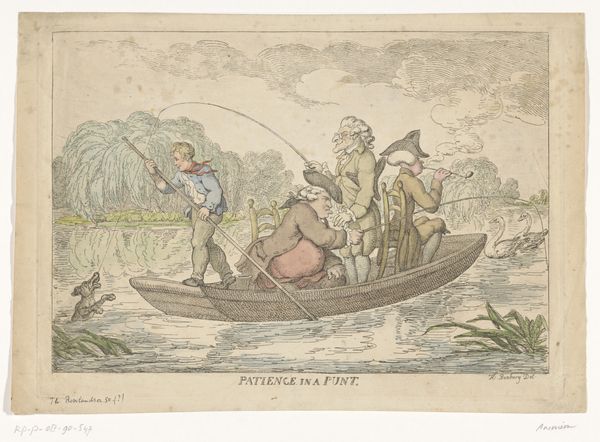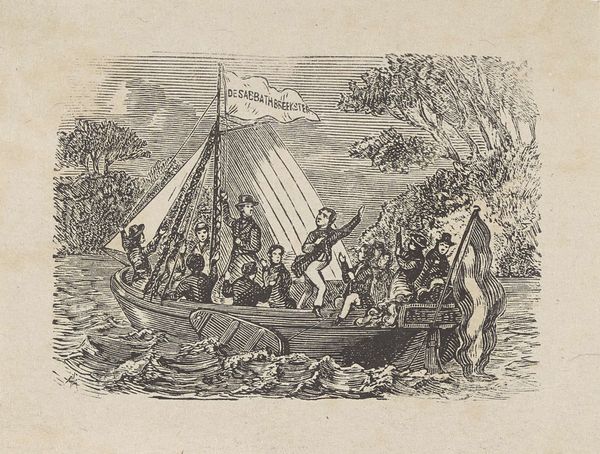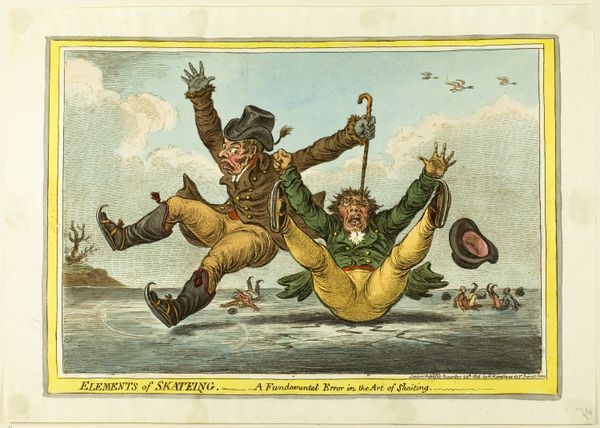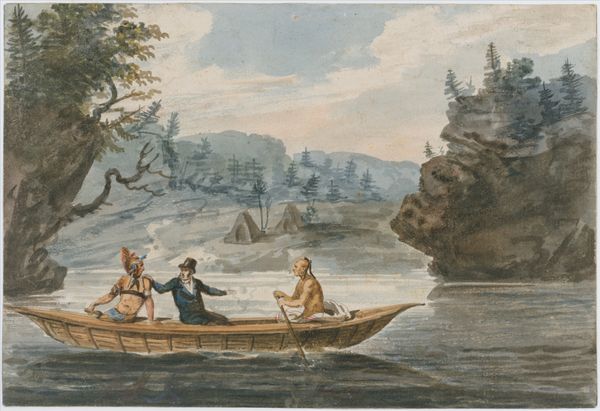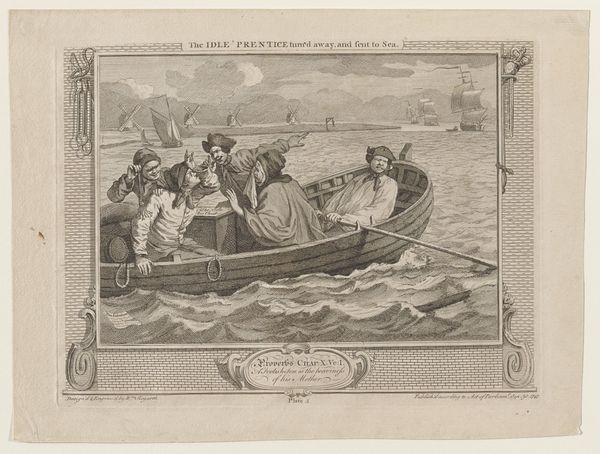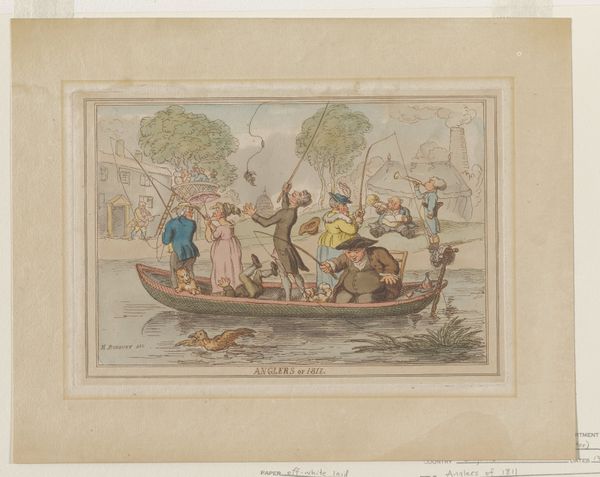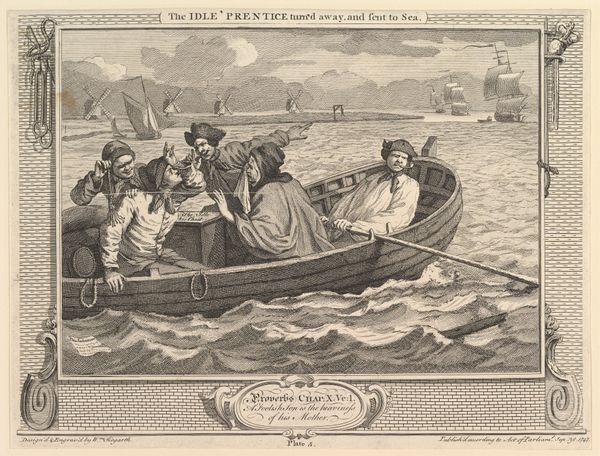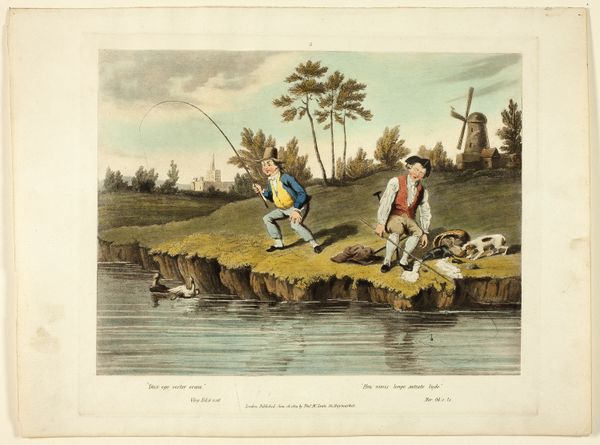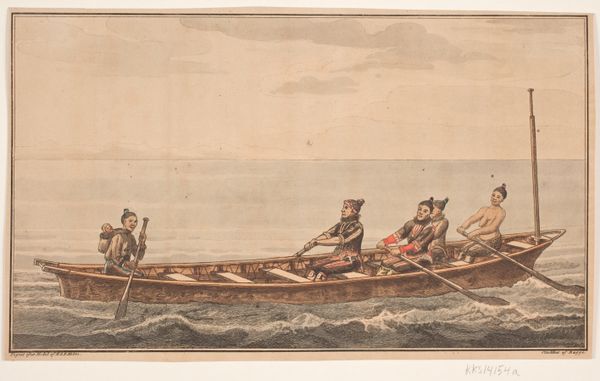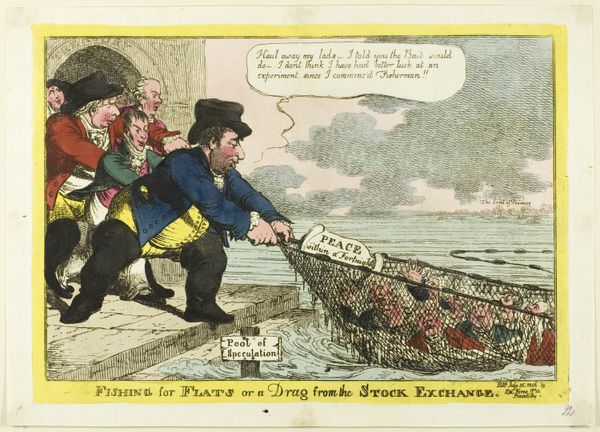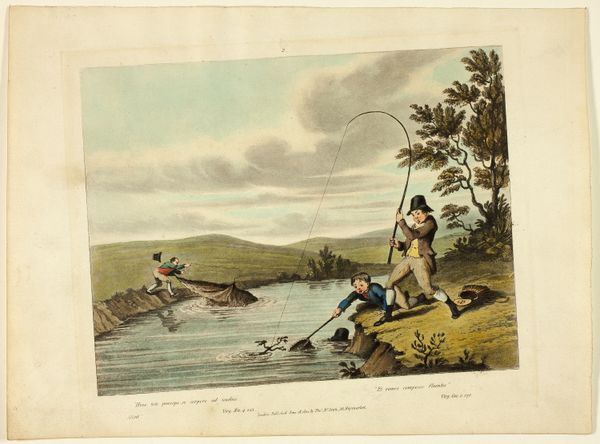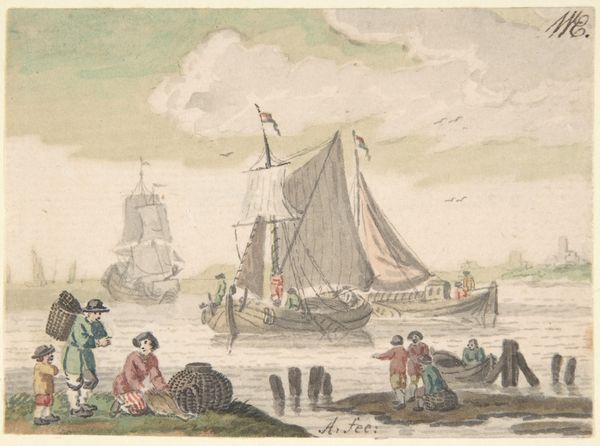
coloured-pencil, print, watercolor
#
coloured-pencil
#
narrative-art
# print
#
caricature
#
caricature
#
figuration
#
watercolor
#
coloured pencil
#
romanticism
#
genre-painting
#
watercolor
Copyright: National Gallery of Art: CC0 1.0
Curator: Here we have Thomas Rowlandson's "Patience in a Punt", created around 1811. It's a delightful example of his satirical prints, using watercolor and colored pencil to bring the scene to life. Editor: My first thought is how comically precarious it all looks! There’s a palpable tension and impending chaos in this little boat—four figures crammed together, fishing, punting, while a dog leaps into the water. Curator: Exactly. Rowlandson was a master of social commentary. He captures the absurdities of Georgian society through these exaggerated characters and situations. Consider the title, "Patience in a Punt"; the humor lies in the very idea of patience within this crowded, clumsy scene. Editor: I find the contrast fascinating. The landscape—the water, the weeping willows in the background—is almost idyllic, a typically Romantic setting. But the figures are pure caricature, embodying the excesses and anxieties of their time. Curator: The political backdrop is crucial here. Britain was embroiled in the Napoleonic Wars, experiencing economic instability and social unrest. Rowlandson's caricatures provided a release valve, a way to poke fun at those in power and the societal elite. Look at how he renders the figures: their expressions, their postures, their ridiculous attire. Editor: Right! Like, are they really trying to enjoy leisure, or are they just performing a display of wealth? The composition almost feels like a stage, a deliberate presentation of types rather than individuals. Curator: Indeed. The museum and the marketplace very much influence art like this. Artists need patrons. Prints like this, circulated widely, created a shared visual language. They solidified perceptions and critiques of social roles and classes in Georgian England. Rowlandson understood how to engage that system. Editor: And it works beautifully! Despite the passage of time, that critical eye, the challenge to societal norms, still resonates. I can't help but see reflections of our own chaotic political landscapes. Curator: Absolutely. Art like Rowlandson's invites us to scrutinize our own assumptions and social performances. Editor: I’ll leave with a question for our listeners then: what societal performances are *we* all staging in *our* precarious little boats today?
Comments
No comments
Be the first to comment and join the conversation on the ultimate creative platform.
